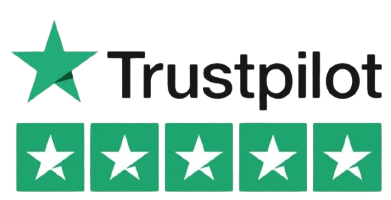Section A: Interactive SMS Level 1 & 2 User Training
Licensed sponsors are under strict legal obligations to meet their compliance duties, or face enforcement action. A significant part of the compliance burden falls on the company’s Level 1 and Level 2 SMS users, who have to know how to use the Sponsorship Management System (SMS) to discharge their company’s compliance duties.
Level 1 or Level 2 SMS users are often heavily involved in the company’s day-to-day HR and immigration work, but this doesn’t make the system any more intuitive or user-friendly. The SMS is notoriously difficult to use, and the Home Office’s SMS user guidance is just as complicated.
Many companies also have only a small number of sponsored workers, so when users do need to log onto the system, they may not be confident or well practised in how to use it.
With no one official Helpdesk to call on for support or advice, Level 1 and 2 users are often left worried about making a mistake, or more likely, unaware they are making mistakes, exposing their company to compliance penalties.
DavidsonMorris SMS Level 1 & Level 2 User Training Course Programme
Our SMS Level 1 & Level 2 User training course is designed to give SMS users the knowledge and confidence to use the Sponsorship Management System correctly and efficiently.
During this highly practical and interactive session, our immigration experts will provide step-by-step guidance, including:
- Insight into the Sponsor Management System and its main functions
- Checking the number of CoS you have allocated
- How to draft and submit an application in the SMS system for more CoS allocations
- How to review and change key personnel
- How to review and change business / company information
- Understanding how to use the SMS to meet your compliance obligations
- Understanding how to carry out your reporting duties
- How to terminate employee sponsorship
- Train you on how to engage with UKVI and what documentation is to be sent to the Home Office following submissions on the SMS
Delegates will come away with a thorough understanding of how to operate the SMS and how to use the system to meet their employer’s compliance duties.
Sessions have limited capacity to provide maximum benefit for delegates.
For more information about our SMS user training and to find out when our next sessions are taking place, contact us.
DavidsonMorris Strategic Insight
Effective licence compliance and management depend on your key personnel knowing how to use the SMS and understanding the duties to be discharged through its proper use.
Expecting SMS users to decipher and apply the official user manuals unaided is unrealistic and invites compliance errors.
We have designed our SMS user training to be highly interactive and practical, with real scenarios and step-by-step guides to everyday tasks. We take delegates beyond the administrative task to explain the underlying principles and rules they are working to.
As far as the Home Office is concerned, user ignorance is no defence, and the onus remains on the employer to ensure their appointed personnel are competent and capable of carrying out their duties. A few hours of training will pay off in the wider context of keeping your licence in order and your Home Office-inspection-ready.
Section B: Role of SMS User Training
When a UK business holds a sponsor licence, the Sponsorship Management System (SMS) is the online platform through which all licence activity is managed. The SMS is the only way for employers to carry out the tasks required to maintain their licence. Without effective use of the SMS, it is impossible to comply with the sponsorship rules.
The Home Office requires every licence holder to appoint at least one Level 1 user to act as the primary point of contact with the system. Some employers will also choose to appoint Level 2 users, who have more limited access but can take on certain operational responsibilities. Both roles come with compliance weight because the SMS is where key sponsor duties are actioned. Tasks such as assigning Certificates of Sponsorship (CoS), reporting worker changes and notifying organisational updates are all performed through this system.
Errors within the SMS can have serious consequences. If the wrong information is reported, or if updates are made late, the sponsor is immediately at risk of enforcement action. The Home Office can suspend, downgrade or revoke a licence if it identifies failings. Employers are expected to ensure their users understand not only how to use the system, but also what to report and when. Training is therefore not optional but a practical necessity for safeguarding the business’s ability to employ sponsored workers.
1. What is SMS Level 1 & 2 User Training?
Training for Level 1 and Level 2 SMS users is a compliance safeguard. The Sponsorship Management System is the Home Office’s direct channel for monitoring whether an employer is meeting its duties. Every entry, update and report submitted through the system carries legal weight. Without training, users are more likely to make errors that expose the organisation to penalties, licence downgrades or even revocation.
SMS user training should focus on two aspects. First is the technical knowledge required to operate the SMS correctly, such as how to assign a CoS or submit a change of circumstances request. Second is the compliance context. Users must understand the reporting deadlines, what must be notified through SMS, and what must be retained as internal records, such as a worker’s residential address. When both elements are covered, the employer reduces the likelihood of compliance breaches and strengthens the overall licence management framework.
Investing in training for Level 1 and Level 2 users also brings benefits for workforce planning. Delays caused by errors or rejections within the SMS can hold up recruitment timelines and create gaps in resourcing. Well-trained users will complete tasks accurately and within the Home Office’s timescales, ensuring that sponsored workers can take up their roles without unnecessary disruption.
Ultimately, the SMS is not an administrative tool to be picked up casually. It is the backbone of the sponsorship system and a direct line to the Home Office. Employers that treat Level 1 and Level 2 user training as a core compliance measure will protect their licence status and avoid costly interruptions to their recruitment plans.
2. Role of Training in Managing Compliance Risk
Training is the first line of defence against compliance risk. Because the Home Office treats all sponsor licence activity as a measure of an organisation’s overall compliance culture, even isolated errors in the Sponsorship Management System can lead to serious consequences. The risks are not limited to HR or compliance teams, they affect recruitment pipelines, business operations and workforce stability.
The sponsor licence regime operates on strict reporting obligations. The Home Office expects information to be accurate, timely and consistent with the sponsor’s internal records. Even minor mistakes, such as recording an incorrect start date or failing to keep internal records up to date, can count as compliance breaches. If multiple errors accumulate, the Home Office may interpret this as evidence that the employer does not have adequate HR systems in place. Proper training ensures SMS users understand the deadlines, reporting categories and the importance of getting details right first time.
The financial and operational risks of poor SMS handling are significant. A suspended licence immediately prevents the assignment of new Certificates of Sponsorship, putting recruitment on hold. A revoked licence can result in sponsored employees losing their right to work, creating major workforce disruption and reputational damage. Training equips users to spot issues early, handle reports correctly and escalate complex matters to senior staff or external advisers before they spiral into enforcement action. For employers, this proactive risk management is far less costly than reacting to penalties.
Delays in recruitment often stem from mistakes made in the SMS. A CoS issued with incorrect details can lead to visa refusals or require re-issue, which adds weeks to a hiring process. Reporting errors can also trigger Home Office queries that delay licence decisions or inspections. Training minimises these disruptions by giving users the confidence to perform tasks correctly the first time. In a competitive hiring environment, avoiding unnecessary delays can be the difference between securing a skilled candidate and losing them to another employer.
Well-trained users also contribute to smoother internal operations. HR teams and compliance managers can rely on SMS updates being completed accurately, reducing the need for corrective work. This efficiency allows organisations to focus resources on workforce planning and business growth rather than fire-fighting compliance problems.
3. Penalties for Non-Compliance
If the Home Office identifies repeated reporting errors, late updates or missing information, it may downgrade the sponsor’s licence rating from A to B. A downgraded licence comes with an action plan, additional costs and heightened scrutiny. If the organisation fails to meet the plan’s requirements, the licence may be suspended. Suspension immediately prevents the employer from issuing new Certificates of Sponsorship, which can bring international recruitment to a standstill.
The most serious outcome of non-compliance is licence revocation. If the Home Office believes the employer has fundamentally failed to meet its sponsor duties, the licence can be withdrawn altogether. Revocation means the organisation loses the ability to employ sponsored workers, and existing sponsored staff will have their visas curtailed. For businesses that rely on skilled international talent, this can create severe disruption, financial losses and reputational harm.
Poorly trained SMS users may inadvertently fail to report worker changes or may assign CoS incorrectly, leading to illegal working. Employers can then face civil penalties of up to £45,000 per worker for a first breach and up to £60,000 for repeated breaches, alongside the reputational damage of being publicly named by the Home Office. Where non-compliance is deliberate or reckless, there is also the risk of criminal sanctions.
The table below shows the stages of Home Office enforcement action, what typically triggers them and the impact for employers.
| Home Office Action | Trigger | Impact on Business |
| Licence Downgrade (A to B) | Repeated reporting errors, missed deadlines, inadequate HR systems | Action plan imposed, additional costs, closer monitoring by the Home Office |
| Licence Suspension | Failure to comply with action plan, more serious breaches found at audit | Cannot assign new Certificates of Sponsorship, recruitment halted until resolved |
| Licence Revocation | Fundamental or repeated breaches of sponsor duties, illegal working discovered | Licence withdrawn, sponsored workers’ visas curtailed, loss of ability to sponsor in future |
| Civil Penalties | Illegal working due to non-compliance or errors in SMS reporting | Up to £60,000 per worker, reputational damage from public naming |
Errors in CoS assignment or late reporting can delay visa applications or cause refusals. Skilled candidates may lose patience or accept offers from competitors, leaving the business with critical skills gaps. These operational risks directly affect growth and service delivery, particularly in sectors that depend on overseas workers to fill shortages. Training ensures users know how to avoid errors that slow down recruitment and jeopardise business plans.
Compliance mistakes often trigger Home Office audits. Once an organisation is flagged for inspection, all HR processes, records and systems are reviewed. A pattern of avoidable SMS errors can lead to increased monitoring or additional audits in future. This consumes management time, increases legal costs and keeps the licence under constant pressure.
Employers who fail to train their SMS users take on unnecessary risks that go well beyond administrative inconvenience. In the Home Office’s eyes, errors are evidence of weak systems and poor compliance culture, both of which undermine the licence. Effective training is therefore a direct investment in safeguarding the business’s recruitment capability and protecting its reputation.
DavidsonMorris Strategic Insight
Effective training will help to plug the gaps between the SMS interface, the (impenetrable) user guidance and discharging your compliance duties. Put very simply, SMS user training is about risk management. It’s frontline compliance that demands adequate training and understanding to avoid errors and penalties.
As well as functional skills on operating the actual system, training should promote an understanding of the rules behind the regime to really hit home about the significance of poor licence management. The implications of a late report or a missed update are long lasting and invite wider scrutiny of your wider compliance practices.
Section C: Who Should Have SMS Training?
Every organisation with a sponsor licence must ensure that its SMS users are properly trained. The Home Office holds the licence holder accountable for the actions of all system users, which means employers cannot assume that individuals will “pick it up as they go along.” Training is necessary to reduce the risk of mistakes, maintain compliance, and protect the ability to sponsor overseas workers.
1. HR Teams and Compliance Staff
In most organisations, the HR team or compliance function will be responsible for day-to-day use of the SMS. These staff members often act as Level 1 or Level 2 users and must be trained to understand both the technical system functions and the underlying compliance rules. Given that many HR staff manage a wide range of responsibilities, without targeted training they may underestimate the significance of reporting deadlines or the implications of an error. Formal training helps them balance SMS duties against other priorities.
2. Authorising Officer Oversight
Although the Authorising Officer may not be the one regularly logging into the SMS, they carry ultimate responsibility for ensuring the licence is managed correctly. They must therefore understand the system well enough to oversee Level 1 and Level 2 users, to review whether reports are being filed on time, and to step in if issues escalate. Training provides the Authorising Officer with the knowledge to question users effectively and to identify potential risks before they attract Home Office attention.
3. New Users and During Transitions
Whenever a new Level 1 or Level 2 user is appointed, training should be a mandatory part of their onboarding. Users stepping into the role without instruction are more likely to make avoidable mistakes, particularly when they are unfamiliar with reporting categories or deadlines. Similarly, when organisations undergo internal change, such as mergers, acquisitions or restructuring, refresher training ensures that existing users are aligned with updated processes and that reporting responsibilities are not overlooked.
4. External Providers and Support Staff
Some employers appoint external immigration advisers as SMS users to support their compliance. Where this approach is taken, the organisation still remains fully responsible for any actions those users take on its behalf. Training should therefore extend to making sure internal staff know how to monitor third-party activity, review records and maintain oversight. Employers cannot outsource accountability, so a clear understanding of how to supervise external support is crucial.
Ensuring all relevant personnel are trained creates resilience within the licence management structure. It prevents knowledge gaps, protects against compliance risks when staff change and demonstrates to the Home Office that the organisation takes its sponsor duties seriously.
DavidsonMorris Strategic Insight
You might initially consider training only for those who will actually use the SMS, but in operational and risk management terms, it’s valuable for anyone with licence oversight and supervision responsibilities over key personnel and SMS users to also undergo training. How can you optimise and improve processes and support your people, if you aren’t au fait with their tools and tasks? Pragmatically speaking, it also helps to have people trained and in place for cover should there be unplanned or long term absences, or personnel leaving the organisation, so you never have a gap in Level 1 access.
Section D: SMS User Roles
The Home Office expects sponsors to allocate the Sponsorship Management System to trusted personnel who understand the duties attached to their role. Within the system, Level 1 and Level 2 users carry distinct responsibilities, with different levels of access and authority. Knowing the boundaries of each role is vital, as errors or misuse can lead to compliance breaches that impact the entire licence. Employers should be clear on what each user can and cannot do, and why structured training is needed to prevent mistakes.
1. SMS Level 1 User Role and Responsibilities
A Level 1 user is the central operator of the Sponsorship Management System (SMS). Every organisation with a sponsor licence must have at least one Level 1 user in place. They hold the primary responsibility for managing the licence on a day-to-day basis and are the first point of contact for the Home Office through the SMS. Because of this position, the Home Office expects Level 1 users to have a strong understanding of the sponsor’s duties and to be capable of carrying out those duties reliably.
The Level 1 user has the broadest system access of all user types. Their responsibilities include assigning Certificates of Sponsorship (CoS) to sponsored workers, reporting changes to sponsored employees’ circumstances and updating the Home Office on organisational changes such as new business addresses or changes in key personnel. They also manage Level 2 users, controlling who is appointed and what access they have.
Where multiple Level 1 users are in place, the first one appointed is usually the most senior and will often be the Authorising Officer, although this is not compulsory. The Level 1 user is the individual who ensures the licence remains active and that any required actions are completed on time. If the sponsor fails to report a change or submits incorrect information, the Home Office will treat it as a compliance breach even if it was an error by the Level 1 user.
Level 1 users hold full administrative rights in the SMS. They can assign CoS to migrant workers, apply for additional CoS allocations and request licence changes. They are also the only users who can add or remove other system users. This makes them highly influential in how the sponsor licence is managed. Employers must select Level 1 users carefully, ensuring they are trustworthy, competent and familiar with the organisation’s recruitment and HR processes.
The Home Office permits an organisation to have more than one Level 1 user, which can be helpful for resilience if one user is absent or leaves the business. However, the number of Level 1 users is usually restricted, and each appointment must be approved by the Home Office. A failure to maintain an active Level 1 user at all times can result in the licence being suspended or downgraded. Maintain at least one active Level 1 user at all times to prevent loss of access if a user leaves or is unavailable.
Training for Level 1 users should cover both the technical operation of the SMS and the compliance framework within which they are working. They need to understand the different types of CoS, the rules on assigning them and the strict timescales for reporting changes to the Home Office. They also need to be clear on the consequences of non-compliance, as their actions directly affect the sponsor’s risk rating.
In practice, training should include walkthroughs of the SMS interface, practice scenarios for reporting worker and organisational changes and case studies of common compliance pitfalls. Many compliance failures stem from HR not informing the Level 1 user of a relevant change or from the user misunderstanding whether an event must be reported. Training must therefore go beyond system navigation to include the wider compliance context, equipping the user to make accurate judgements and escalate issues when necessary.
Level 1 users should also be trained on record-keeping, as the Home Office may audit sponsor files and compare them with information submitted through the SMS. Consistency between internal records and SMS updates is a common area of Home Office scrutiny. Without training, even experienced HR professionals can make mistakes that place the licence at risk.
2. SMS Level 2 User Role and Responsibilities
A Level 2 user is an additional role within the Sponsorship Management System (SMS) that provides more limited access compared to a Level 1 user. Employers often appoint Level 2 users to share the workload of day-to-day SMS functions, particularly in larger organisations where multiple people may need access to issue CoS or record worker changes. While their powers are restricted, Level 2 users still play an important role in helping the sponsor meet its compliance obligations.
The duties of a Level 2 user are narrower than those of a Level 1 user. They can assign CoS to sponsored workers and carry out certain updates relating to those workers, but they cannot make changes to the sponsor licence itself. Their primary function is to support the Level 1 user by handling routine tasks within the system, particularly when it comes to worker management. This allows employers to delegate administrative duties without granting full control of the licence.
Because Level 2 users can interact directly with the SMS, they must still act in line with the Home Office’s compliance rules. Even though their access is restricted, any errors they make when assigning a CoS or updating information about a worker can expose the sponsor to compliance action. Employers therefore need to treat the appointment of Level 2 users as a serious decision rather than a convenience.
Level 2 users do not have authority to make structural changes to the sponsor licence. They cannot apply for additional CoS allocations, update key personnel details or make changes to the organisation’s licence status. They also cannot add or remove other users from the SMS. All of these functions remain the responsibility of the Level 1 user.
In effect, Level 2 access is designed for operational use only. They carry out straightforward activities within the system but do not have responsibility for managing the licence as a whole. This limited scope reduces risk for employers but also means that Level 2 users are not a substitute for having sufficient Level 1 cover in place.
Level 2 users require training that reflects their narrower responsibilities but still equips them to avoid compliance breaches. They need to understand how to correctly assign a CoS, including the rules on genuine vacancies, appropriate salary thresholds and skill level requirements. They should also be trained on how and when to record worker changes, such as early termination of employment or changes in work location.
Training should focus on accuracy and consistency, as even small errors in CoS assignments can lead to visa refusals for workers or enforcement action against the employer. Level 2 users should also be aware of their reporting boundaries, so they know when to escalate matters to the Level 1 user instead of trying to handle them independently. Without this understanding, there is a real risk of compliance failures or missed reporting deadlines.
Employers should refresh training regularly, particularly when the Home Office updates sponsor guidance or introduces new rules. Level 2 users often have less direct exposure to compliance processes than Level 1 users, so ongoing support is important to keep their knowledge current and reduce the risk of mistakes.
3. Key Differences Between Level 1 and Level 2 Users
While both Level 1 and Level 2 users work within the Sponsorship Management System (SMS), their authority, responsibilities and compliance impact differ significantly. Employers need to understand these differences clearly so that access is allocated appropriately, training is targeted and accountability is properly managed.
| Function | Level 1 | Level 2 |
| Assign Certificate of Sponsorship (CoS) | Yes | Yes |
| Apply for additional CoS allocation | Yes | No |
| Add or remove SMS users | Yes | No |
| Promote a Level 2 user to Level 1 (request/approval process) | Yes | No |
| Update business/company details in SMS | Yes | No |
| Report changes for sponsored workers | Yes | Yes (within scope of worker updates) |
| Request other licence changes (e.g. key personnel) | Yes | No |
| End worker sponsorship in SMS | Yes | Yes |
| View UKVI/SMS messages and correspondence | Yes | Yes |
| Manage licence status and respond to action plans | Yes | No |
a. Permissions
Level 1 users are granted full administrative control of the SMS. They can manage the sponsor licence, update organisational details, add or remove other users, apply for extra CoS allocations and assign CoS to workers. Level 2 users, by contrast, have a much narrower remit. They can assign CoS and handle certain updates relating to sponsored workers, but they cannot alter the licence itself or manage other users.
This distinction means employers must ensure that only individuals with appropriate seniority and trustworthiness are appointed as Level 1 users. The Home Office views Level 1 appointments as carrying direct accountability for compliance across the entire licence.
b. Reporting Duties
Level 1 users carry the burden of ensuring all sponsor reporting obligations are met. They are responsible for making sure organisational changes, such as new addresses, mergers, takeovers or changes in key personnel, are reported to the Home Office within strict deadlines. They also oversee reporting on sponsored workers, even if a Level 2 user inputs the information into the system.
Level 2 users are typically involved in day-to-day updates on sponsored workers, such as reporting changes in job details or recording early terminations. However, they do not carry responsibility for wider organisational notifications. If a Level 2 user misses or mishandles a worker report, it is still the employer and the Level 1 user who will be held accountable.
c. Accountability
The Home Office places ultimate responsibility on the Level 1 user and, by extension, the Authorising Officer who oversees them. Even though Level 2 users may carry out practical tasks, they operate under the oversight of Level 1. This means compliance failures by a Level 2 user are treated as failures of the licence holder, not of the individual.
For employers, this makes it important to create clear internal lines of accountability. Level 1 users should monitor the activity of Level 2 users, review reporting logs and ensure that delegated tasks are being performed accurately. Regular internal audits and training updates can help reduce the risk of errors slipping through.
DavidsonMorris Strategic Insight
Key personnel underpin the visa sponsorship regime. Each role has very specific duties, and it is absolutely vital that anyone you appoint to these roles (whether the same person or multiple people) fully understands what is expected of them by law and that they are capable of fulfilling this through training, skills and knowledge.
One simple but effective measure is to write a job description for each key personnel role. Use a RACI matrix to document who is Responsible (for example, a Level 2 user issuing a CoS), who is Accountable (a Level 1 user overseeing), who has to be Consulted (HR or a line manager verifying job details) and who should be Informed (payroll, compliance officer). Review these permissions and responsibilities quarterly.
Good governance will be recognised if the Home Office inspects.
Section E: Summary
The Sponsorship Management System is the backbone of the sponsor licence framework. Level 1 and Level 2 users carry responsibility for carrying out the updates and reports that keep the licence compliant. Errors or gaps in reporting can expose the business to penalties, licence suspension or even revocation. For that reason, training is not an optional add-on but a compliance safeguard that directly protects the organisation’s ability to employ overseas workers.
Well-trained SMS users understand both the technical steps within the system and the compliance weight behind each action. Employers who invest in structured training reduce the risk of breaches, ensure smoother recruitment processes and demonstrate to the Home Office that they take their duties seriously. In a competitive market for international talent, the ability to issue Certificates of Sponsorship quickly and without errors is a strategic advantage.
Ultimately, training Level 1 and Level 2 users is a cost-effective way to strengthen compliance culture, minimise operational risk and maintain long-term licence security. Employers that build training into their compliance framework will be best placed to retain their licence, safeguard their workforce and support business growth.
Section F: Need Assistance?
Managing a sponsor licence carries legal and operational risks. Errors in the Sponsorship Management System can put your ability to employ overseas workers at risk. Our SMS Level 1 & Level 2 User Training is designed to give your team the skills and confidence to use the system correctly and meet every Home Office duty.
We deliver interactive, practical level 1 & 2 user training, specifically designed to ensure your SMS users understand both the technical system functions and the compliance context behind them.
Contact us to book your SMS User Training and safeguard your licence with expert support.
Section G: FAQs on SMS Level 1 & 2 User Training
How many Level 1 users can a sponsor have?
A sponsor must always have at least one active Level 1 user, but the Home Office allows multiple Level 1 users to be appointed if needed. Each appointment requires approval, and the number will usually be limited. Having more than one Level 1 user helps ensure continuity if someone leaves or is unavailable.
Can a Level 2 user be promoted to Level 1?
Yes, but only if the Home Office approves the appointment. Employers must request the change through the SMS, and the individual must meet the eligibility criteria for a Level 1 user. Once approved, the user’s access rights are expanded accordingly.
Do Level 1 and Level 2 users need formal qualifications?
No formal qualifications are required, but users must be competent, reliable and familiar with the organisation’s HR and compliance processes. What matters is their ability to understand sponsor duties and operate the SMS accurately and on time.
Is training mandatory under Home Office rules?
The Home Office does not mandate formal training courses, but sponsors are held accountable for the actions of their users. In practice, this makes training a necessity, as it equips users to avoid mistakes that could result in penalties or licence loss.
What happens if a sponsor has no active Level 1 user?
If a sponsor has no active Level 1 user, they risk losing access to the SMS altogether. This can lead to suspension of the licence because the Home Office expects sponsors to have adequate personnel in place to manage compliance at all times.
Section H: Glossary of Key Terms
| Sponsorship Management System (SMS) | The Home Office’s online platform used by licensed sponsors to manage their sponsor licence and carry out reporting duties. |
| Level 1 User | The primary user of the SMS with full administrative access. Responsible for managing the licence, reporting organisational and worker changes, and overseeing Level 2 users. |
| Level 2 User | A user with restricted SMS access. Can assign Certificates of Sponsorship and make certain worker updates but cannot manage the licence or add other users. |
| Certificate of Sponsorship (CoS) | An electronic document assigned to a migrant worker through the SMS to support their visa application under a sponsored route. |
| Authorising Officer | The most senior person within the organisation responsible for the sponsor licence and for ensuring compliance with Home Office duties. |
| Licence Downgrade | When the Home Office reduces a sponsor’s licence rating from A to B due to compliance failings, usually requiring an action plan to restore A status. |
| Licence Revocation | The withdrawal of a sponsor licence by the Home Office due to serious or repeated breaches, removing the right to sponsor overseas workers. |
| Home Office Audit | An inspection carried out by the Home Office to check whether a sponsor is complying with its licence duties, often triggered by errors or reports in the SMS. |
Section I: Additional Resources and Links
| Resource | Description | Link |
| Home Office SMS Guidance | Official guidance on how to use the Sponsorship Management System and comply with reporting duties. | https://www.gov.uk/government/collections/sponsorship-information-for-employers-and-educators |
| Sponsor Guidance Part 1 | Explains how to apply for a licence and the main sponsor responsibilities under the rules. | https://www.gov.uk/government/publications/sponsor-a-visa-worker-guidance-for-employers |
| Appendix D: Record Keeping | Sets out the documents and records employers must keep for sponsored workers and licence compliance. | https://www.gov.uk/government/publications/appendix-d-sponsor-guidance-documents-for-employers |
| UKVI Contact Information | Provides contact details for UKVI if you need help with sponsor licence issues or SMS access. | https://www.gov.uk/contact-ukvi-inside-outside-uk/y/inside-the-uk/other |
| DavidsonMorris Sponsor Licence Services | Specialist legal support for sponsor licence applications, compliance management and SMS user training. | https://www.davidsonmorris.com/sponsorship/ |












